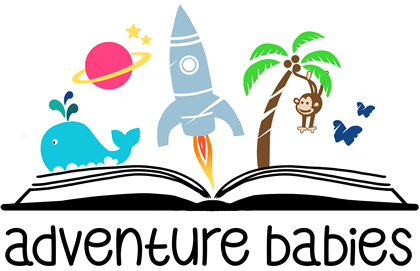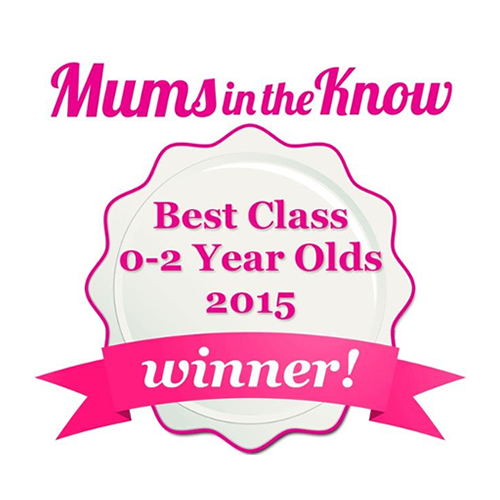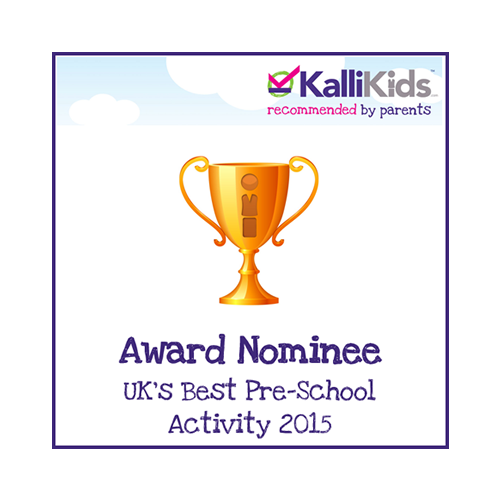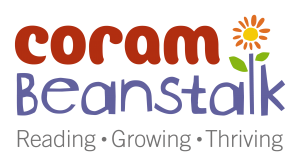As a new parent, you’re probably wondering what “play” means for your little one. Babies are natural-born explorers, and play is their way of learning about the world. But what exactly does play consist of for babies? Let’s dive into the different types of play, why it’s important, and how you can make the most […]
Find out more about all areas of baby development. Find out what babies and toddlers should be doing at different stages of their development and gain tips, ideas and activities to support you baby in their development.
Unlock Your Baby’s Potential: The Benefits of Baby Development Classes Welcoming a new baby into your life is a thrilling and joyous experience. As parents, you want to provide the best for your little one, ensuring they grow up healthy, happy, and well-rounded. One of the best ways to support your baby’s growth is by […]
Helping Your Baby Hit the Sitting Milestone: Fun Tips for You Welcoming a new baby into the family brings joy, love, and excitement. As mums, we eagerly watch our little ones grow and develop, celebrating every milestone along the way. One key milestone is sitting up, and it’s a significant step in your baby’s journey […]
Boost Baby development, Brain Growth and Learning in Under 5s through Sensory Storytelling Adventures at Adventure Babies…
As parents, caregivers, and educators, we constantly seek effective ways to nurture our children’s development. One powerful method that has gained attention is sensory stimulation, particularly through interactive storytelling. Engaging children under the age of five in sensory-rich activities can significantly enhance brain growth and learning capacity. Let’s explore how this works and why our interactive storytelling is a fantastic tool for young minds.
The Science Behind Sensory Stimulation
During the first five years of life, a child’s brain undergoes remarkable growth. This period is characterised by rapid development of neural connections, with the brain forming up to 1 million new neural connections every second. Sensory stimulation—experiences that involve touch, sight, sound, taste, and smell—plays a crucial role in this process. When children engage in activities that stimulate their senses, their brains are better able to form and strengthen neural pathways, leading to improved cognitive, social, and emotional development.
The Role of Interactive Storytelling
Interactive storytelling is a dynamic and immersive way to engage children’s senses. Unlike passive listening, interactive storytelling involves children in the narrative through actions, sounds, and tactile experiences. Here’s how it supports brain growth and learning:
- Enhanced Language Skills: Interactive storytelling encourages children to listen actively, respond, and even predict what happens next. This active engagement helps expand their vocabulary, improve comprehension, and develop better communication skills.
- Improved Memory: By involving multiple senses, interactive storytelling helps create stronger memories. Children are more likely to remember stories that they’ve experienced through sight, sound, and touch.
- Emotional Development: Stories often contain emotional content that children can relate to. By acting out parts of the story or expressing emotions, children learn to understand and manage their own feelings, as well as empathise with others.
- Cognitive Growth: Interactive storytelling often includes problem-solving and critical thinking elements. Children are encouraged to think about the storyline, make decisions, and anticipate outcomes, which boosts their cognitive development.
- Social Skills: Participating in storytelling sessions with others helps children learn to take turns, share, and collaborate. These social interactions are crucial for developing strong interpersonal skills.
Practical Tips for Sensory Storytelling
To make the most of interactive storytelling, consider incorporating the following elements:
- Visuals: Use colorful pictures, puppets, or props to bring the story to life.
- Sounds: Integrate sound effects, musical elements, or character voices to enhance auditory stimulation.
- Touch: Include tactile experiences such as textured books, props, or activities where children can physically interact with story elements.
- Movement: Encourage children to act out parts of the story, using their bodies to mimic actions or emotions.
Interactive storytelling is a powerful tool for fostering sensory stimulation and supporting brain growth in children under five. By engaging multiple senses, this approach enhances language skills, memory, emotional development, cognitive growth, and social skills. Incorporating interactive storytelling into your routine can provide your child with a rich, multifaceted learning experience that lays a strong foundation for future growth and development. So, gather your props, practice your character voices, and dive into the wonderful world of interactive storytelling with your little ones!
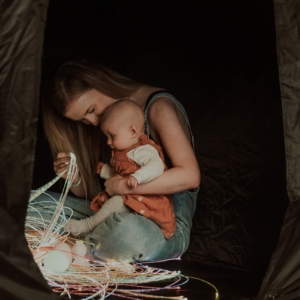
Welcoming a new member into your family is an exhilarating experience, but it also comes with a whole new set of responsibilities—especially when it comes to ensuring the safety of your little explorer. Baby-proofing your home is not only about protecting your precious bundle of joy but also about creating a nurturing environment where they can thrive without unnecessary hazards. In this friendly blog post, we’ll take you through some simple and effective ways to baby-proof your house with love.
1. Start with a Walkthrough:
Before you dive into installing safety gadgets and locks, take a stroll through your home from your baby’s perspective. Get down on their level and identify potential hazards such as sharp corners, electrical outlets, dangling cords, and small objects that could pose choking hazards. This firsthand view will help you prioritize areas that need immediate attention.
2. Cover Those Corners:
Babies are naturally curious creatures, and sharp corners are like magnets to their little heads. Soften the edges of furniture with corner guards or bumpers to prevent bumps and bruises during exploration sessions. Not only will this protect your baby, but it’ll also give you peace of mind knowing they can roam freely without the risk of injury.
3. Lock It Up:
Cabinets and drawers may seem harmless to adults, but to a curious toddler, they’re treasure troves waiting to be explored. Invest in childproof locks and latches to keep curious hands out of harm’s way. Whether it’s the kitchen cabinets filled with pots and pans or the bathroom drawers stocked with toiletries, securing these areas will prevent accidents and keep your little one safe.
4. Cord Control:
Electrical cords and blind cords are potential strangulation hazards for curious babies on the move. Keep cords out of reach or use cord shorteners to prevent them from becoming entangled. For window blinds, consider installing cordless options or using safety devices to keep cords securely out of reach.
5. Gate It Off:
Staircases can be a source of worry for parents, especially when your little one starts to explore their climbing skills. Install safety gates at the top and bottom of stairs to create a barrier and prevent falls. You can also use gates to block off areas of the house that are off-limits or contain potential hazards.
6. Secure Furniture:
Tall and heavy furniture poses a tipping risk, especially as babies start pulling themselves up and attempting to stand. Anchor bookcases, dressers, and other top-heavy furniture to the wall to prevent them from tipping over. It’s a simple yet crucial step in ensuring your baby’s safety as they navigate their surroundings.
7. Stay Vigilant:
No amount of baby-proofing can replace vigilant supervision. Keep a watchful eye on your little one as they explore their environment, and be ready to swoop in at a moment’s notice. Even with all the safety measures in place, accidents can still happen, so it’s essential to stay present and engaged.
In conclusion, baby-proofing your home is a labor of love aimed at creating a safe and nurturing environment for your little one to grow and thrive. By taking proactive steps to identify and address potential hazards, you’ll not only protect your baby but also enjoy greater peace of mind as you embark on this exciting journey of parenthood. So, roll up your sleeves, gather your safety supplies, and let’s baby-proof your home with love!
A Guide to Starting Solids: Best Foods for Baby Weaning
As your baby grows, so does their need for solid foods to complement their milk or formula intake. Weaning your little one onto solid foods is an exciting milestone, but it can also be overwhelming, especially for first-time parents. The transition to solid foods marks an important stage in your baby’s development, laying the foundation for healthy eating habits later in life. To help you navigate this journey, here’s a comprehensive guide to the best foods to start weaning your baby with.
- Pureed Fruits: Start with single-ingredient purees of soft fruits such as bananas, apples, pears, and peaches. These fruits are easy to digest and packed with essential nutrients like vitamins and minerals. Pureeing them ensures a smooth texture that’s gentle on your baby’s developing digestive system.
- Pureed Vegetables: Introduce vegetables gradually, beginning with mild-flavored options like sweet potatoes, carrots, peas, and squash. Steam or boil the vegetables until they’re soft, then blend them into a smooth consistency. Vegetables are rich in vitamins, minerals, and fiber, promoting healthy growth and digestion.
- Iron-Rich Foods: Iron is crucial for your baby’s brain development and overall growth. Introduce iron-rich foods such as pureed meat (chicken, turkey, beef), fortified infant cereals, and mashed beans or lentils. These foods provide a vital nutrient that breastfed babies may need more of as they approach six months of age.
- Baby Cereals: Fortified infant cereals are a convenient option for introducing grains into your baby’s diet. Choose single-grain cereals like rice, oatmeal, or barley, mixed with breast milk, formula, or water to achieve a smooth consistency. Start with a thin consistency and gradually thicken it as your baby becomes more accustomed to solids.
- Soft Cooked Foods: As your baby progresses, you can introduce soft cooked foods that offer different textures and flavors. Examples include well-cooked pasta, soft cheese, scrambled eggs, and finely chopped or mashed fruits and vegetables. Be mindful of any potential choking hazards and ensure foods are cut into small, manageable pieces.
- Finger Foods: Around six to eight months, your baby may start showing interest in self-feeding. Offer bite-sized finger foods such as small pieces of ripe avocado, banana, cooked vegetables, and toast strips. Encourage exploration and independence while closely supervising to prevent choking.
- Yogurt and Cheese: Dairy products like plain yogurt and mild cheese are excellent sources of calcium and protein for your growing baby. Opt for unsweetened, full-fat varieties to provide essential nutrients without added sugars or artificial flavors.
- Allergenic Foods: Introduce allergenic foods like peanuts, eggs, fish, and wheat one at a time, and observe your baby for any adverse reactions. Starting these foods early can help reduce the risk of allergies later in life. Offer small amounts and wait a few days before introducing another allergen.
- Homemade vs. Shop-Bought: While homemade baby food allows you to control the ingredients and textures, store-bought options can be convenient for busy parents. Choose high-quality, organic options with no added sugars, salts, or preservatives. Be sure to check the expiration dates and packaging integrity before feeding your baby.
Weaning your baby onto solid foods is a gradual process that requires patience, experimentation, and plenty of love and encouragement. Remember that every baby is unique, so go at your own pace and trust your instincts as a parent. By offering a variety of nutritious foods and respecting your baby’s cues and preferences, you’ll lay the foundation for a lifetime of healthy eating habits. Enjoy this exciting journey of discovery and growth with your little one!
Join in with our Adventure Babies Sensory Storytelling classes here!
Come and say Hi to other parents on our Adventure Babies community!
Tummy time, that adorable practice of placing your baby on their belly while awake and supervised, is more than just a cute photo opportunity—it’s a vital building block for your baby’s healthy development. The benefits of tummy time extend across various domains, starting with the physical. As babies lift their heads and strengthen neck muscles during these sessions, they lay the groundwork for crucial motor skills. This foundational strength is not only a precursor to crawling and rolling but also essential for achieving later milestones like sitting and standing.
Beyond the physical realm, tummy time enhances sensory and cognitive development. The change in perspective encourages babies to explore their surroundings visually, improving their spatial awareness. This newfound view also fosters an early understanding of cause and effect, as they learn to engage with objects within their line of sight. The sensory stimulation from the different textures beneath them during tummy time further refines their tactile senses.
Additionally, this belly-down playtime serves as an excellent opportunity for bonding between you and your baby. As they begin to engage in tummy time activities, they receive positive interaction, fostering emotional connections crucial for their social and emotional development.
- Colourful Tummy Mats: Invest in a vibrant and soft mat featuring engaging patterns and high-contrast colours. The visual stimulation will capture your baby’s attention and make the experience more visually exciting.
- Mirror Play: Place a baby-safe mirror in front of your little one. Babies are often fascinated by their reflections, and this simple addition can turn this time into a delightful activity as they explore their own faces.
- Toys: Introduce age-appropriate toys that your baby can reach for and grasp during tummy time. Toys with various textures and contrasting colours not only make the experience more enjoyable but also encourage motor skill development.
- Sing and Chat: Get down on their level and engage in cheerful conversation or sing light-hearted songs. Your voice is not only comforting but also provides auditory stimulation, making the experience more interactive and enjoyable for your baby.
- Parent Participation: Make this time a bonding experience by getting down on the floor with your baby. Lay next to them, make eye contact, and provide encouraging smiles and words. Your presence and positive interaction create a shared, joyous activity that your baby will look forward to.
Remember, the key is to keep it light, enjoyable, and stress-free. Gradually increasing the duration of tummy time as your baby becomes more accustomed ensures a positive association with this crucial developmental activity.
It’s been so much fun making and sending out our latest batch of mini parachutes! Our personal Adventure Babies parachutes make the best Christmas gift for baby or toddler for so many brilliant reasons….
- Sensory Development: Parachute play engages a child’s senses. The feel of the parachute fabric, the movement of air, and the visual stimulation as it moves up and down can contribute to sensory development.
- Motor Skills: Playing with a mini parachute encourages the development of gross motor skills. As little ones grasp the edges of the parachute and move it up and down, they enhance their coordination and muscle strength. For our even smaller adventurers, reaching out for the dangly beautiful fabrics is brilliant motor skill exercise.
- Social Interaction: Parachute play can be a group or paired activity, even with our mini ones! It can be a fantastic way for toddlers to interact with others, promoting social skills, cooperation, and teamwork.
- Imaginative Play: The versatility of a mini parachute allows for creative and imaginative play. Children can use it as a tent, a cape, or a hiding spot, fostering imaginative thinking.
- Physical Activity: In a world where screen time is prevalent, a mini parachute encourages physical activity. It gets kids moving and active, promoting a healthy lifestyle from an early age.
- Versatility: Mini parachutes are versatile toys that can be used both indoors and outdoors. This makes them suitable for play in various settings, providing entertainment in different environments.
- Parent-Child Bonding: Playing with a mini parachute can be a delightful bonding activity for parents and their little ones. It offers a chance for shared playtime, creating lasting memories.
- Entertainment for Various Ages: While initially appealing to toddlers, a mini parachute can continue to be entertaining as a child grows. It can be adapted for different games and activities suitable for varying age ranges.
- Compact and Portable: Mini parachutes are typically compact and easy to transport. This makes them a practical gift for families who may be traveling during the Christmas holiday. They fold up and fit inside your changing bag and are small enough that you can play with it in a café or at somebody else’s house.
Our classes are designed to support sensory development in babies and toddlers and are crammed full of activities to support this growth in a fun and engaging way. Sensory development refers to the process through which children acquire and refine their ability to perceive and interpret sensory information from their environment. It involves the maturation and integration of the five main senses. Providing an environment and activities full of Different textures, sounds, colours, tastes and smells are essential for babies’ development for several reasons:
- Sensory Stimulation: Diverse textures and colours engage a baby’s senses, promoting sensory development. Touching, feeling, and exploring various textures and colours help babies refine their sense of touch, sight, and even taste.
- Cognitive Development: Exploring different textures and colours encourages cognitive development. Babies learn to distinguish between objects and understand cause-and-effect relationships.
- Fine Motor Skills: Manipulating objects with various textures and colours improves fine motor skills. Babies develop dexterity and hand-eye coordination as they explore objects with different attributes.
- Visual Stimulation: Bright and contrasting colours are visually stimulating for babies, aiding in the development of their visual acuity and perception.
- Creativity and Curiosity: Exposure to various textures and colours sparks a baby’s curiosity and creativity. It encourages them to explore, experiment, and learn about the world around them.
- Emotional and Social Development: Colourful and textured toys often provoke emotional responses, promoting social interactions as babies engage with the people around them during play.
Incorporating a variety of textures and colours into a baby’s environment and playtime can enrich their overall sensory and cognitive experiences, supporting their holistic development. Sensory development is especially important during early childhood, as it forms the foundation for various cognitive, motor, and social skills.
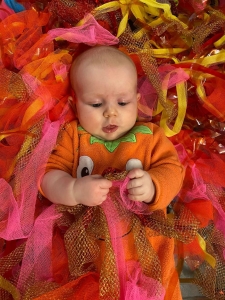
Ah, the delightful journey of language development in babies! As language experts here at Adventure Babies, let me share some insights into when all that charming babbling and cooing typically transforms into their very first word.
Firstly, it’s essential to understand that language development in babies is a gradual process, and the timing can vary significantly from one child to another. On average, most babies say their first word around the age of 9 to 14 months. However, it’s entirely normal for some to start a bit earlier, while others may take a little more time. The key is to provide a nurturing and language-rich environment for your little one to thrive.
Here are some milestones and factors that can give you an idea of when to expect that first word:
1. Babbling Stage: Around 6 to 8 months, babies typically engage in babbling. These are repetitive, vowel-consonant combinations like “bababa” or “dadada.” Babbling is a precursor to spoken language and a positive sign of speech development.
2. Social Interaction: Babies who are approaching their first word often exhibit a heightened interest in social interaction. They may make eye contact, smile, and respond when you talk to them. These interactions are essential for language development.
3. Imitation: Look for signs that your baby is trying to mimic sounds or words you say. They might repeat simple sounds or syllables, indicating their readiness to take their first linguistic steps.
4. Contextual Awareness: As they get closer to that first word, you may notice that their sounds become more contextually relevant. They might say “mama” or “dada” in the presence of their parents, or the name of a favourite toy or pet when they see them.
5. Receptive Language: While they may not say their first word just yet, babies often understand more words than they can express. They may respond to simple commands like “wave bye-bye” or “clap your hands.”
6. Encouragement: Encourage their budding language skills by talking to them, reading to them, and singing songs. This helps build their vocabulary and comprehension.
Remember, the first word may not be crystal clear; it might sound more like a simplified version of the actual word. Don’t be surprised if “mama” is “mamamama” or “dada” is “dadada” at first. These early attempts are adorable and a significant step in their language journey.
While there’s a typical age range for a baby’s first word, it’s important to embrace the uniqueness of your child’s development. Be patient, create a language-rich environment, and savour every moment of this incredible linguistic adventure as your baby takes their first steps into the world of words.
